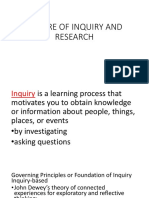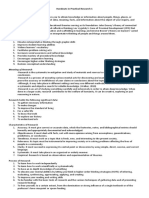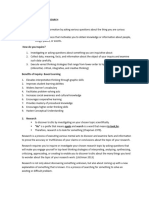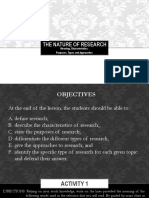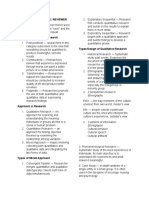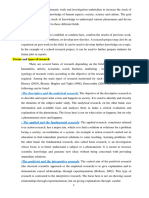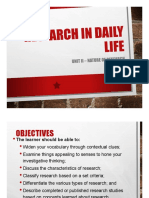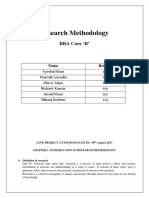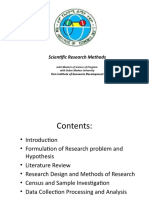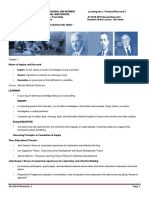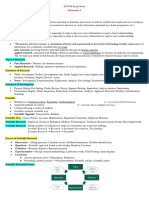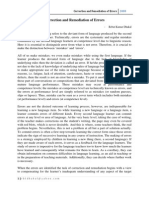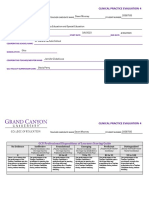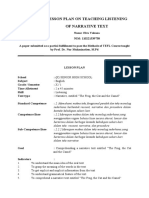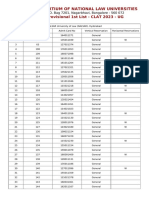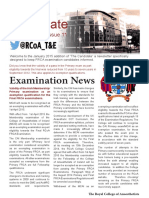0% found this document useful (0 votes)
122 views7 pagesPR1 - Unit 1 Notes
1. Research involves systematically collecting, analyzing, and interpreting information to increase understanding of a topic. It is not just gathering facts but requires analysis and conclusions.
2. The purposes of research include gaining knowledge on new topics, correcting perceptions, developing and evaluating concepts and theories, and obtaining practical knowledge to solve problems.
3. There are different types of research classified by application (pure or applied), purpose (descriptive, correlational, explanatory, exploratory, or action), and data type (qualitative using words or quantitative using numbers). The scientific, naturalistic, and triangulation approaches also differ in how variables are controlled and data is gathered and analyzed.
Uploaded by
BluvrCopyright
© © All Rights Reserved
We take content rights seriously. If you suspect this is your content, claim it here.
Available Formats
Download as DOCX, PDF, TXT or read online on Scribd
0% found this document useful (0 votes)
122 views7 pagesPR1 - Unit 1 Notes
1. Research involves systematically collecting, analyzing, and interpreting information to increase understanding of a topic. It is not just gathering facts but requires analysis and conclusions.
2. The purposes of research include gaining knowledge on new topics, correcting perceptions, developing and evaluating concepts and theories, and obtaining practical knowledge to solve problems.
3. There are different types of research classified by application (pure or applied), purpose (descriptive, correlational, explanatory, exploratory, or action), and data type (qualitative using words or quantitative using numbers). The scientific, naturalistic, and triangulation approaches also differ in how variables are controlled and data is gathered and analyzed.
Uploaded by
BluvrCopyright
© © All Rights Reserved
We take content rights seriously. If you suspect this is your content, claim it here.
Available Formats
Download as DOCX, PDF, TXT or read online on Scribd
/ 7

